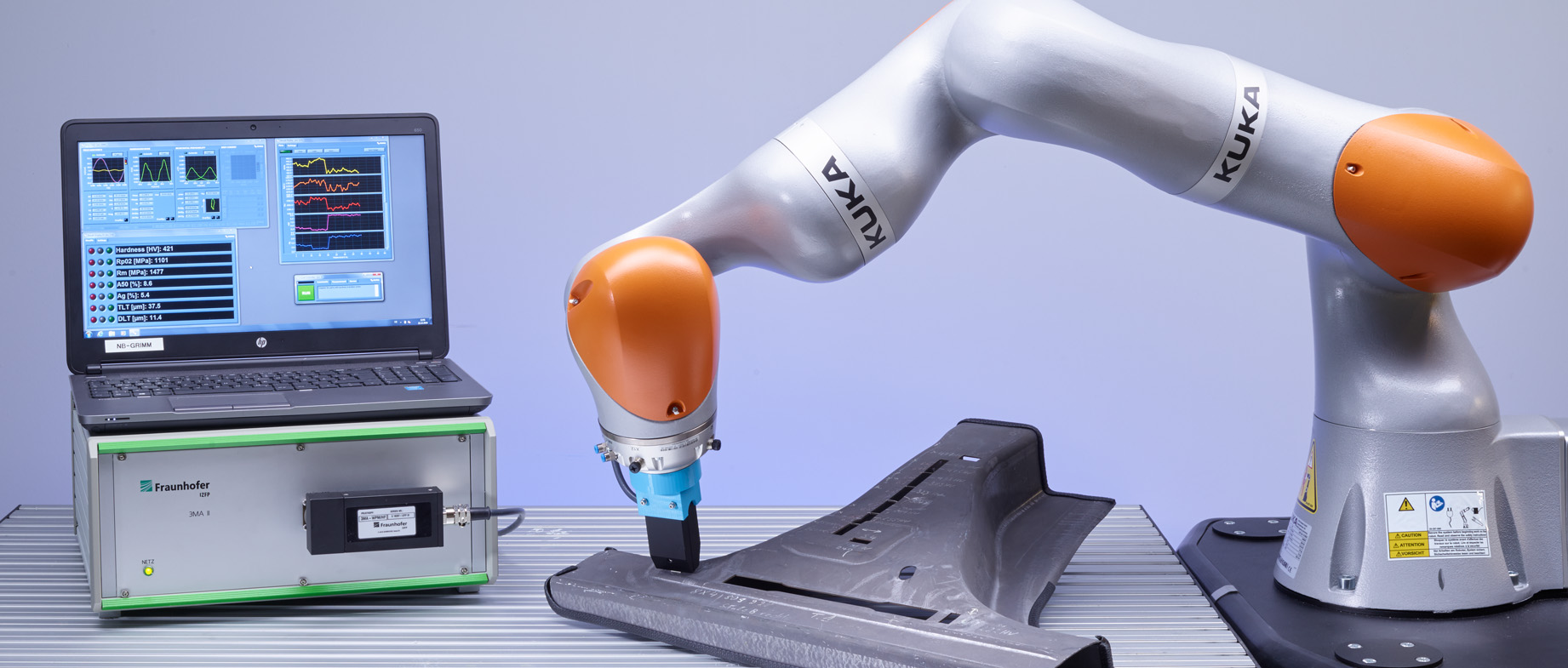In order to ensure their material properties in the desired manner, components in mechanical, automotive and plant engineering must be heat treated and machined. Metallographic analyses, residual stress measurements with X-ray diffraction and conventional hardness indentation methods are usually used for this purpose. These methods have in common a low testing speed and the destructive character of the test, which is why they are largely unsuitable for testing the surface layer properties already during or immediately after a manufacturing step in the process chain.
The 3MA II test method developed at Fraunhofer IZFP enables, above all, characterization of the characteristics of the surface layers, which cannot be satisfactorily tested non-destructively using conventional methods. It is fully automatable and can be directly integrated into the manufacturing process. Its high testing speed enables 100 percent inspection in most applications, while allowing rapid and simultaneous evaluation of several relevant quality characteristics of the surface layer (0 mm to 8 mm component depth).
